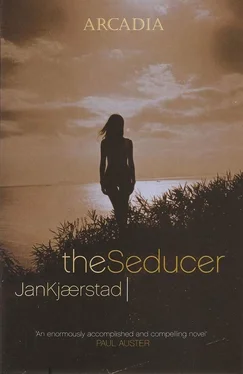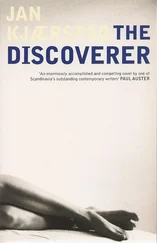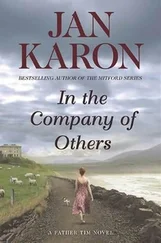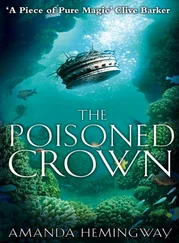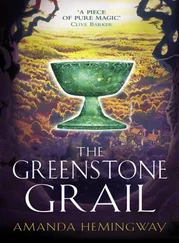The pivotal sequence, to which the programme kept returning, therefore showed Gustav Vigeland in the late August of 1901 sitting in the midst of Lincoln’s mighty cathedral, peering through a pair of binoculars at the various figures on the walls and up under the roof, dwelling especially on the little angels in the choir as if these could lend him inspiration; with Wergeland cutting in the odd black-and-white still from Nidaros Cathedral and Vigeland’s sculptures there. By this means, Jonas also gave some sense of a comparison between the two cathedrals in Lincoln and Trondheim which served, in a way, to illustrate an inherent Norwegian characteristic, something to do with the scale: how everything in Norway is smaller and how everything in Norway is merely an imitation of something else. There were those who maintained — unjustly — that by juxtaposing a Norwegian cathedral and an English cathedral in this way Jonas also succeeded in expressing some of his own feelings about the relationship between Gustav Vigeland and, say, an artist of the stature of August Rodin.
For the greater part of the programme, however, Vigeland was seen sitting in Lincoln Cathedral, his binoculars resting on his stomach, drawing — drawing and drawing like a man possessed as if this Gothic interior were acting as a catalyst for his genius, giving rise to a torrent of ideas. Jonas had a steady stream of people pass by Vigeland as he sat there in the middle of the cathedral — children, adolescents, men and women, adults with children, old folk — and showed, with close-ups of the sketch pad, how Vigeland drew them or took his outset in them, and how each and every one formed the rudiments of some well-known figure, which Jonas demonstrated by dissolving from the sketch to the finished sculpture as it can be seen in Vigelandsparken or elsewhere. Jonas was particularly pleased with the moment when the church organ suddenly surged into life, whereupon Vigeland promptly began to sketch out, as if in a trance, the outlines of his great fountain, the one now standing at the centre of the park.
In this, the main body of the programme, Jonas also introduced an experimental ploy which was to crop up throughout the series, a spot which he called ‘Cross-Connections’, the idea being that, one way or another, the central character always crossed paths with one or more of the subjects of other programmes, which was often an ‘impossible’ person. This was Jonas Wergeland’s way of alluding to influences that run counter to conventional ways of thinking. Thus in the programme on Vigeland he had both Henrik Ibsen and Edvard Grieg — both in the masterly guise of Normann Vaage, of course — stroll past Vigeland as he sat there in the heart of the cathedral with his binoculars resting on his stomach, whereupon Vigeland, this time working with clay, working like magic — the speed of execution achieved by trick photography — promptly proceeded to model busts of them, as indeed he did in real life. But Wergeland also had the subject of another programme come wandering anachronistically past, to be reproduced in bust form, namely the fashion designer Per Spook, who also exchanged a few remarks with Vigeland regarding the significance of the sketch and the idea of the mannequin as sculpture in motion, together with a few words on the subject of permanence and transience.
Jonas Wergeland’s prime aim with this programme was, nonetheless, to show how the whole of Vigelandsparken was nothing less than a secularised cathedral. If there was one thing Vigeland had learned on his ‘Gothic tour’, from standing in all of those vast cathedrals, it was the way in which each individual element merged into the greater whole.
During the planning stages Jonas himself was surprised, so surprised that he could hardly credit it, by how much the park had in common with a Gothic church, and Lincoln Cathedral in particular; how the strict axial design of the park could easily be interpreted as an echo of the long church building. By dint of a slow dissolve, to the strains of organ music, from an aerial shot of the interior of Lincoln Cathedral to an aerial shot of Vigeland Park, filmed from a helicopter, the viewer’s eyes were opened to the similarity between the two and to the image of the park as a perfect open-air cathedral in which the great wrought-iron gates at the main entrance correspond to the front door of Lincoln cathedral or, possibly more correctly, the translucent stained glass window above the door; the bridge representing the nave of the church and the Children’s Playground, a side-chapel of sorts. At the intersection of Lincoln’s transept and choir one finds the organ and in the park this corresponds perfectly with the fountain, encircled, what is more, by a labyrinthine design of the sort found inlaid in the floors of medieval churches. But what about the Monolith? Besides being akin to a tower, the Monolith and the circular steps leading up to it are exactly like the high altar in the choir of the cathedral, the only difference being that people have taken the place of the angels. The Wheel of Life behind this could possibly be likened to the east window in the choir or perhaps an altarpiece. Jonas even found an echo of the Lincoln Imp, the grotesque little carving on one of the cathedral pillars, in Vigeland’s serpentine figures on the pillars by the bridge. So for Jonas Wergeland, Vigelandsparken suddenly became a church without walls or roof, a cathedral built around everyday life, in which man is seen depicted at all of life’s sometimes weird and wonderful stages, with the Monolith speaking of a bond between this man and the universe.
The main point of this comparison was, however, to illustrate the hidden Gothic element in the Vigeland Park sculptures: the very thing which, as far as Jonas was concerned, gave them the necessary twist and precluded any naturalistic misapprehension whereby Vigeland would be credited with an all too facile imitative zeal. The more walks Jonas took through Vigeland’s park, through that fantastical setting, especially at night in winter, the more he was struck by the wry aspect of many of the sculptures, individual figures and groups; there were times in fact when, in their vulgarity, one might almost say brutality, they all but tipped over into caricature or grotesquerie, not least when viewed as a whole, giving as they did the impression of a swarming mass. If there was one thing Vigeland’s sculptures were not, it was smooth and lifelike. Instead they were so rough that in the groups of stone figures you could almost see the marks of the chisel. By and large, Vigeland’s style was — like the Gothic — not all that remarkable; it was more the substance and the feeling behind it that hit one in the eye, most of it — again like the Gothic — extremely naïve, such that it spoke straight to the heart. For Jonas, this Gothic touch saved the park as a whole from appearing pompous and stiff. Instead its strength lay in the profusion of images; the park acquired the air of a fable and as such it also functioned as a springboard for the imagination of the strolling onlooker.
I have to admit that Gustav Vigeland is, to put it mildly, not one of my favourite sculptors, but I believe that Jonas Wergeland acquitted himself very well in the difficult, not to say impossible, task of saying something thought-provoking about Vigelandsparken, considering the enormous popularity, the almost banal place this artist occupies in the hearts of most Norwegians, as was proved quite conclusively some years back when the theft of a small and in itself not particularly exceptional sculpture caused as much of a stir as an average-sized natural disaster. Although the park is a popular tourist attraction, I venture to point out that by no means all foreign visitors find it as fascinating; in fact a few have even gone so far as to say that Vigelandsparken is the sort of complex that Albert Speer might have built for Hitler had the Germans not lost the war.
Читать дальше
